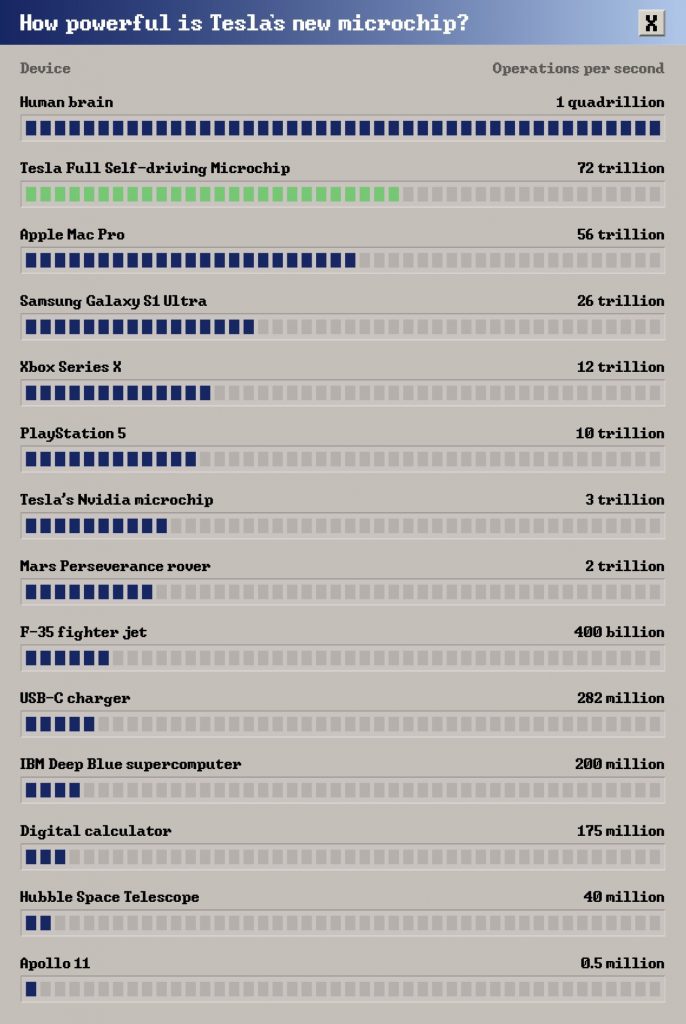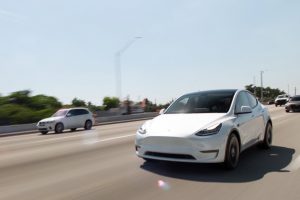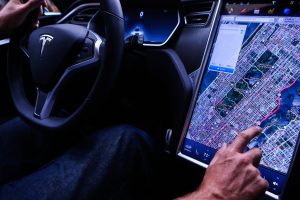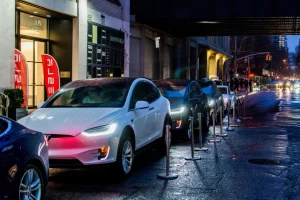Tesla’s Model S isn’t as fast as a fighter jet (yet), but in terms of computing power, the current generation of Tesla models leaves even the most advanced military and space-exploration vehicles in the dust.
The exponential expansion in the power of computers over the past few decades isn’t news—every schoolkid has probably heard that their smartphone has more computing power than the computers that took the Apollo 11 astronauts to the Moon in 1969.
Regular readers of this column are probably also aware that achieving true self-driving capability will require a tremendous amount of computing power, and that, with this goal in mind, Tesla has steadily upgraded the computer systems used in its vehicles.
Earlier versions of Tesla’s Autopilot system relied on chips from supplier Nvidia. When Tesla launched Autopilot 2.0, it said the included computer had the computing power of about 150 MacBook Pros. In 2019, Tesla replaced that chip with a new one that it designed in-house, which it claimed delivers 21 times the performance of the previous chip (it’s also cheaper, and requires only a little more power).
The new chip, which is manufactured by Samsung, consists of two neural network arrays, each of which is capable of 36 trillion operations per second (teraflops). It’s supposed to be powerful enough to handle the incredibly computing-intensive task of full self-driving, once the software is ready. Tesla’s latest FSD computer includes two of the chips, for the sake of redundancy.
Just for fun, Select Car Leasing compared the computing power of Tesla’s badass chip to that of some other historic computing devices. The computer that enabled the Apollo 11 mission delivered about half a million operations per second, or half a megaflop. This means that Tesla’s twin chips, with their combined 72 teraflops, pack nearly 150 million times the computing power that took astronauts Armstrong, Aldrin and Collins to the Moon. NASA’s vehicles have gotten a lot more sophisticated since 1969—the Perseverance rover that landed on Mars in February 2021 is controlled by a computer with two teraflops of power. However, that’s still small potatoes in the self-driving world—Tesla’s FSD hardware could theoretically power some 36 Mars rovers.
The FSD system has 180 times the computing power of an F-35, the US Air Force’s most advanced fighter jet; 360,000 times the potency of the IBM Deep Blue supercomputer that beat world chess champion Garry Kasparov; 7.2 times the juice of a PlayStation 5 console; or 1.3 times the oomph of Apple’s latest Mac Pro.
“How could it be that Tesla, who has never designed a chip before, would design the best chip in the world?” Elon Musk once boasted. The answer has something to do with the creative and persistent application of the most powerful supercomputer known. That would be the human brain, which is thought to be capable of one petaflop (one quadrillion operations) of processing power.

Written by: Charles Morris; Source: Select Car Leasing





